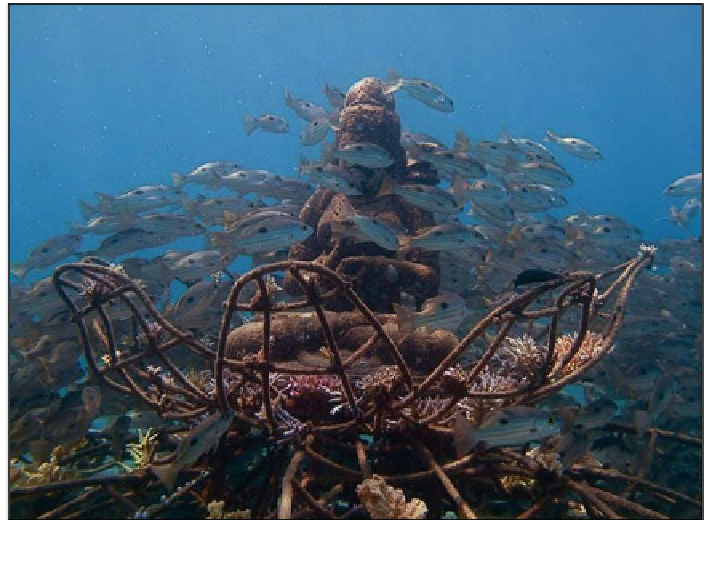Environmental Engineering Reference
In-Depth Information
Fig. 4.7
Biorock structure at Pemuteran Bay, Bali, Indonesia (photo by: R. Morrow-Euigk)
Frames of steel are placed onto ocean floors and low voltage current that is not
harmful to marine life is passed through the frames. This encourages minerals
dissolved in the sea water to crystallise. A layer of minerals appears on the frames
within a few days upon which coral can be attached. Accretion rates are up to
50 mm per year with a load bearing strength of between 24 and 80 MPa (con-
crete's compressive strength is typically between 17 and 28 MPa) (Goreau
2010
;
Pawlyn
2011
, p. 50). The process continues for as long as the current moves
through the metal substrate. The resulting material has self-repairing characteris-
tics. The exact make-up of the material is dependent on the type of sea water it
grows from.
The original intent of the technology was to develop low cost structures on land
(Pawlyn
2011
, p. 50). Suggestions have been made that integrating Biorock with
offshore wind turbines or ocean energy power generators by diverting small cur-
rents to foundations could be used to regenerate surrounding marine ecosystems
(Pawlyn
2011
, p. 50). The physical presence of the frames, the low voltage cur-
rents and an environment suitable for coral attract other marine life, and over time
diverse ecosystems mature. Coral and oysters grow three to five times faster on
Biorock and have a survival rate in higher ocean temperatures caused by climate
change of 16-50 times higher than background rates. Biorock has been used since
1975 in at least 20 countries (Goreau
2010
). This is an example of a biomimetic

Search WWH ::

Custom Search